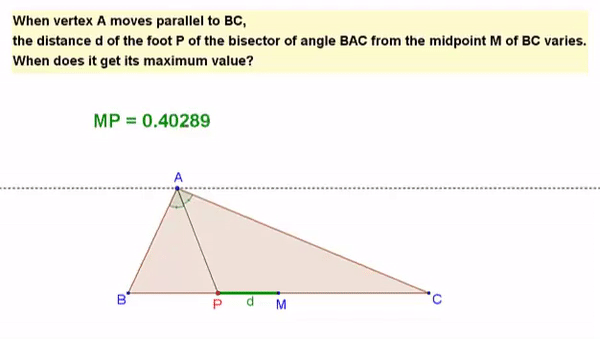Varying foot distance

If and the corresponding height is , then .
Submit .
This section requires Javascript.
You are seeing this because something didn't load right. We suggest you, (a) try
refreshing the page, (b) enabling javascript if it is disabled on your browser and,
finally, (c)
loading the
non-javascript version of this page
. We're sorry about the hassle.
Let the foot of perpendicular from A to B C extended be D and ∣ C D ∣ = x . Then ∣ A B ∣ 2 = h 2 + ( 2 l + x ) 2 and ∣ A C ∣ 2 = h 2 + x 2 . Since A P is the bisector of ∠ B A C , therefore ∣ A C ∣ ∣ A B ∣ = ∣ P C ∣ ∣ B P ∣ = l − d l + d . Combining these we get ( l − d ) 2 ( l + x ) = d ( h 2 + x 2 ) . For d to attain maximum, x must equal 2 d ( l − d ) 2 . Then d m a x = l 2 + h 2 − h . So a = 1 , b = 1 , c = − 1 and a + b + c = 1 + 1 − 1 = 1